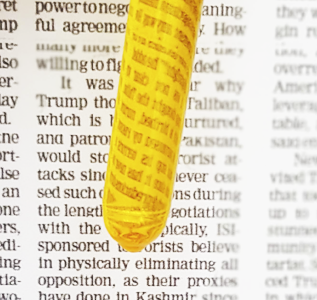Lab Test Results Interpretation Online
Complete Blood Count (CBC) Urinalysis (UA) Comprehensive Metabolic Panel (CMP) Thyroid Function Tests (TFTs) Fasting Blood Glucose TestUrine Appearance
Urine appearance (transparency, turbidity, Clarity, CLA)
When analyzing urine, its appearance is evaluated first.
Interpret now "Complete Blood Count (CBC)"
Interpret now "Comprehensive Metabolic Panel (CMP)"
Urine transparency and turbidity are evaluated by measuring the transmission of light. Normally, freshly voided urine is transparent.

When describing appearance of urine, the following terms can be used:
- clear urine (transparent)
- slightly cloudy or hazy urine (there are visible particles in the urine, a newsprint can be seen through the urine tube and it can be read)
- cloudy urine (there is a significant amount of visible particles; newsprint is poorly visible through a urine tube and it is difficult to read)
- turbid urine (a newsprint is not visible through a urine tube)
When allowed to stand for long periods of time, urine becomes cloudy due to the precipitation of salts and other components. This is normal and has no diagnostic value. Therefore, deliver your urine to the laboratory within an hour after collecting it. Otherwise, your urine test results may be inaccurate.
Highly turbid urine may be due to erythrocytes, leukocytes, bacteria, epithelium, mucus, fats and various crystals (urates, phosphates, oxalates) in your urine.
Occasionally turbid urine is not always a symptom of some disease. Turbid urine may be caused by not drinking enough water. However, consult your doctor if your urine has been turbid for a long period of time.
Automatic interpretation of the urinalysis results
+ Sources
- Foley A, French L. Urine clarity inaccurate to rule out urinary tract infection in women. J Am Board Fam Med. 2011;24(4):474–475.
https://doi.org/10.3122/jabfm.2011.04.100007 - Bulloch B, Bausher JC, Pomerantz WJ, Connors JM, Mahabee-Gittens M, Dowd MD. Can urine clarity exclude the diagnosis of urinary tract infection?. Pediatrics. 2000;106(5):E60.
https://doi.org/10.1542/peds.106.5.e60